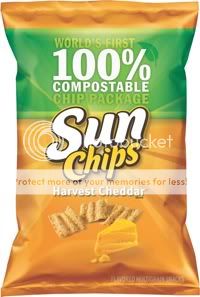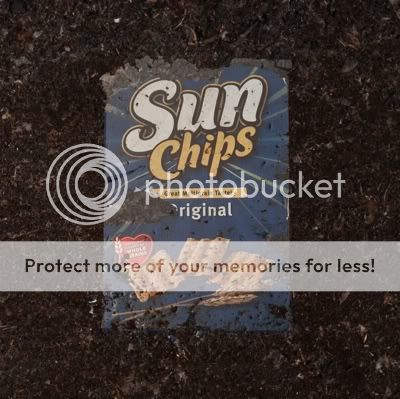Earth Day was a week ago, but the words from one commercial I heard that day still echo in my head.
We need to keep changing, no matter what day it is, because change can keep this world beautiful.
I have made some changes. We use reusable bags and bottles. EnergyStar-certified light bulbs. We’ve turned down the heat this past winter, and take shorter showers. I use cloth dish towels instead of paper towels as often as I can. I wash clothes in cold water. I carefully examine each piece of garbage before putting in the trash, to see if any of it can be recycled. Those are all little things that don’t take significant time or effort.
One project I’ve wanted to take on for a long time is that of composting. I remember when I was a little girl, how I’d help my grandpa take scraps out to the big compost pile in his backyard. We’d use a big rake to mix it all up. Sometimes I’d even find a worm or two in there.
A few weeks ago, I participated in a web conference with composting expert, Sophie Uliano, from GorgeouslyGreen.com. Sponsored by SunChips, we learned about the composting process, and I’ve definitely been inspired to get started making my own compost.
How does composting relate to SunChips?
 That commercial I mentioned at the beginning of the post was for SunChips. SunChips realized that those that reach for their chips as a healthier snack, are the same people that are also looking for solutions for a healthier environment. They’ve implemented several green initiatives, including launching a solar collector field at one of their plants.
That commercial I mentioned at the beginning of the post was for SunChips. SunChips realized that those that reach for their chips as a healthier snack, are the same people that are also looking for solutions for a healthier environment. They’ve implemented several green initiatives, including launching a solar collector field at one of their plants.
Most recently, SunChips has created the world’s first 100% compostable chip bag! Developed by 30+ scientists from a dozen companies and organizations, this bag took 4 years of research and testing. Scientists needed to figure out how to create a bag that keeps the product fresh and great-tasting, but is also able to degrade and turn into quality compost that you can use in your garden. They came up with this bag to the right, a first-of-its-kind, 100% compostable chip bag. Made from plant-based, renewable materials, it fully decomposes in about 14 weeks when placed in a hot active compost bin or heap.
The following are some tips I learned about the art of composting.
What is composting?
- It’s a wonderful way of transforming scraps/trash into “compost”, which in turn goes back into the earth providing valuable nutrients for growing plants.
- It keeps trash out of landfills.
- It can greatly enhance the physical structure of soil, reducing land erosion.
- It’s a small step that almost anyone can take, that makes a big difference and doesn’t cost anything!
Keys to successful composting
You need:
- A bin. Black plastic encourages it to stay really warm. You can also create a compost pile on the ground, but a bin keeps it more contained.
- A compost caddy is helpful. This can be an old coffee can that you can toss scraps into in the kitchen, and empty into the compost bin every 3 days.
- Organic material. Anything that was living at one time is great for compost bins.
Layer the compost pile for best results. Thin layers of alternating greens and browns. If you prefer, everything can all be thrown in together, but it has to be mixed well.
One part “green”
grass clippings, garden prunings, old leaves, old flowers, fruit and vegetable scraps, etc.
Three parts “brown”
straw, sawdust, shredded paper, dry leaves, etc
How to best maintain it.
Moisture
- Gently water material as you build up the stockpile – and then again as you fill up the bin.
- Keep compost materials moist but not soggy.
- The surface should also remain damp (think of a wrung out sponge), especially during the summer months.
Air
- Turning aerates the center of the heap, which reduces unpleasant odors and allows the microbes to heat the pile to higher temperatures.
- Regularly turning the compost will help speed up the decomposition process. Once a week or every two weeks is enough.
When is the compost ready?
- When finished it should look, feel and smell like rich, dark potting soil.
- You should not be able to recognize any of the items you put in there.
- Finished compost is usually less than half the volume of the materials you started with, but it’s much denser.
- Apply finished compost to your garden about 2-4 weeks before you plant, giving the compost time to integrate and stabilize within the soil.
Kids can get involved!
They’ll get to see – and enjoy – the cycle of life by helping:
- Gather compost materials. It could be added to their daily chores.
- Turn the compost pile.
- Take turns watering the compost pile to keep it moist.
- Soak finished compost in water to “brew” compost “tea” for watering plants.
- Spread finished compost in the garden about 2-4 wks before planting.
Some more advice:
- Plants that have been treated with pesticides and/ or herbicides (weeds and lawn clippings) should be avoided.
- Do not compost fats, pet droppings, or animal products. They will attract pests to the pile and can spread disease.
- Compost decomposes fastest between 120 and 160 degrees F. Decomposition will occur at lower temperatures, but it takes much longer.
- Does your compost pile smell? It’s probably due to a large number of anaerobic microbes, which are working hard to break down your compost. To cut down on the anaerobic process, aerate your pile regularly to create air spaces. You might also add 2 cups of baking soda to minimize odor.
- Don’t throw away your kitchen waste in the winter — try an indoor composter.
Some more compostable materials:
paper napkins • pet hair • wood chips • hay • old wedding bouquet • pine needles • old herbs • paper towels • potato peelings • weeds • coffee grounds • shredded newspaper • old pasta • soy milk • nut shells • apple cores • cooked rice • receipts • matches • freezer-burned veggies • popcorn • spices • wool socks • stale bread • wood ashes • tea bags • egg shells • corncobs • tree bark • moldy cheese • outdated yogurt • birdcage cleanings • vacuum cleaner bag contents • seaweed and kelp • SunChips compostable bags
_________________________________________________

The new packaging is available in stores now! The bag is a little noisy, but the chips are as good as always.
Visit www.sunchips.com to learn more about how you can take your own small steps to help protect the planet, including turning the SunChips bag into a great, natural compost.
I’ve got an old bucket with a lid that I’ve been collecting scraps in for a few days now, and a crumpled up SunChips bag waiting for us in a bin outside. I’ll keep you updated on our progress over the next few months!
FritoLay provided me with me a complimentary bag of SunChips as a thank you for listening in on the webinar.
You provide a great guide to composting in this article. It is very comprehensive.
One thing to consider is that the SunChip bag is made of a polyester that is derived from corn and other plant materials that are grown with synthetic fertilizers and pesticides. If you wouldn’t put “plants that have been treated with pesticides and/ or herbicides” in your compost, it’s probably better not to put the bags in, too. Organic gardeners would want to stay away from this.
Bill Brikiatis´s last blog post ..Composting Compostable Packaging